What Is Sustainable Gardening?

- Why Sustainable Gardening is Important
- What Is Sustainable Gardening?
- Organic Gardening
- Home Remedies
- Pollinator Gardens
- Native Plants
- Lawn Alternatives
- Crop Rotation
- Cover Crops
- Compost
- Mulch
- Organic Fertilizers
- Conserving and Using Water Wisely
- Upcycling and Recycling
- Permaculture
- Regenerative Gardening
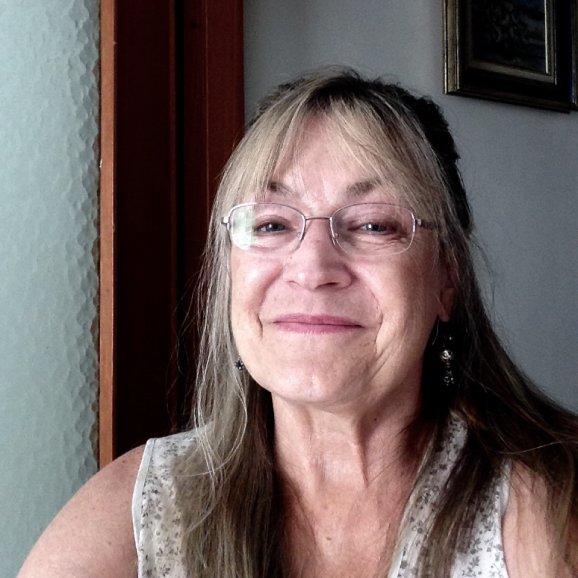
Sustainable gardening is all about methods and concepts that have social, economic, planetary and personal impact. Practicing sustainable gardening at home might mean making a few simple changes in our gardening methods and, perhaps, some basic shifts in our thinking. You may already be practicing sustainable methods, but it’s always worth reviewing and learning some new ideas. In this article we’ll discuss:
- Why sustainable gardening is important
- What is sustainable gardening?
- Organic gardening
- Home remedies
- Pollinator gardens
- Native plants
- Lawn alternatives
- Crop rotation
- Cover crops
- Compost
- Mulch
- Organic fertilizers
- Conserving and using water wisely
- Upcycling and recycling
- Permaculture
- Regenerative gardening
If you’re gardening at any level or size, you’re already an earth hero. But gardening practice with an eye toward sustainability is of the highest importance to the earth at this time. The word sustainability brings to mind countless ideas and methods, but the primary goal of gardening sustainably is to reduce our impact on the earth, leaving our yards, gardens, orchards, and property in a stronger and healthier condition going forward. Whether you’re living in a small space like an apartment, maintaining a home garden, managing a commercial farm or preserving a large estate, considering sustainable options and ideas can be of value to all of us.
Why Sustainable Gardening is Important
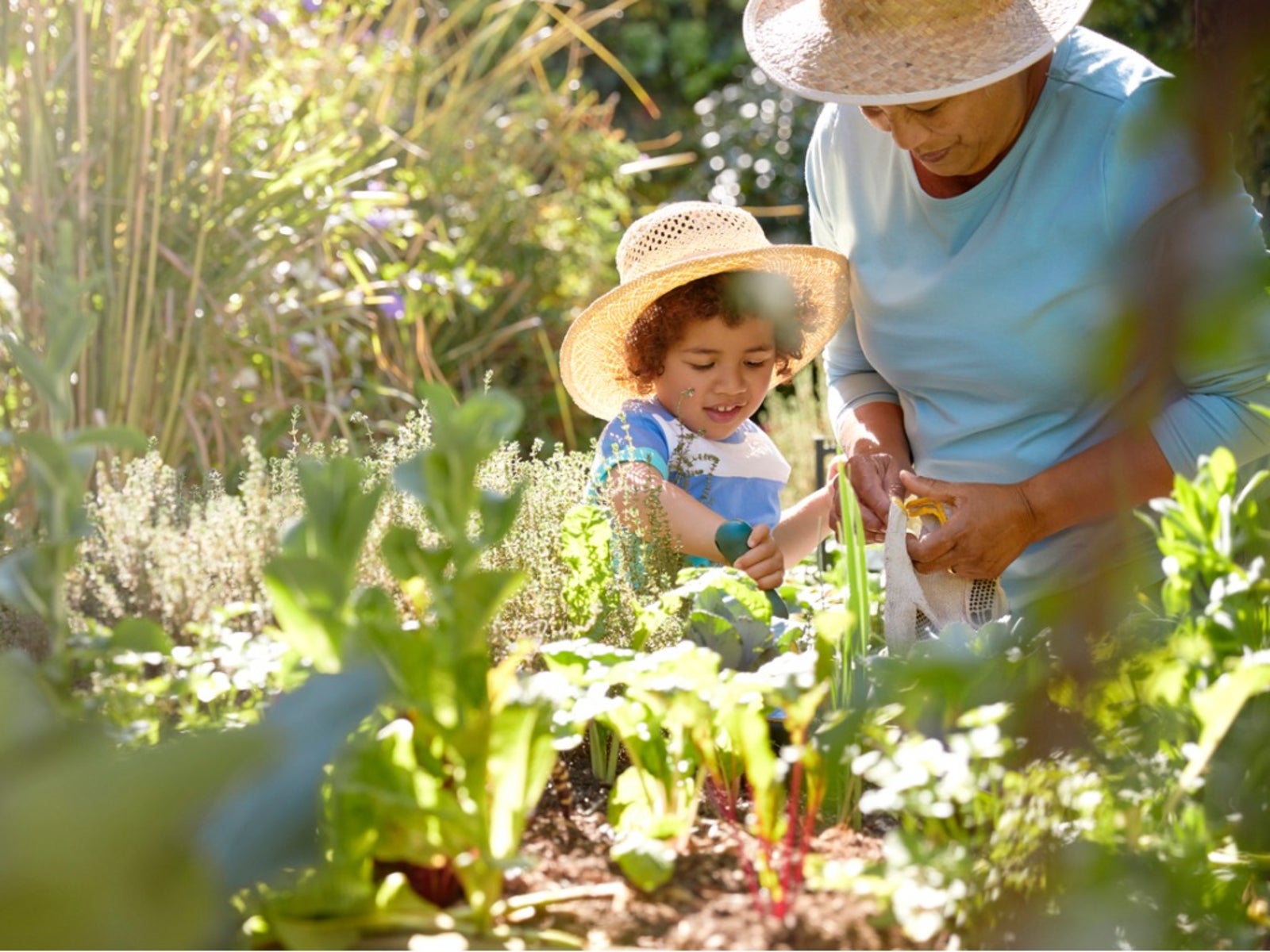
It’s true that every gardener makes an important contribution, whether gardening for food, for pollinators or just for fun. Gardening in all types and sizes improves the quality of our air and soil and helps reduce our individual carbon footprint. What we do now, even in the smallest home garden, has an impact on the future of the planet. Practicing sustainability in the garden even at a micro level is easier than you may think and is a great contribution toward solving the problems of climate change.
What Is Sustainable Gardening?
Here are some examples: When we grow our own food, or at least source our food locally, we’re helping to eliminate the need for plastic packaging and chemical preservatives, as well as reducing the environmental impact of transporting food. Environmentally conscious gardening benefits our soil, the foundation of earth’s health, and in turn helps to resist climate change. When we support pollinators, we’re contributing to the future of food production. Conserving and harvesting water, and a multitude of other methods can help us be better environmental citizens.
Let’s look at some ways to increase the sustainability factors in your personal garden practices. We’ll explore some environmentally friendly ways you can contribute to this growing movement. Remember, adopting even the smallest changes can contribute to a brighter future for our planet.
Developing Sustainable Gardening Methods
A great quote from the EPA reminds us: “Everything that we need for our survival and well-being depends, either directly or indirectly, on our natural environment. To pursue sustainability is to create and maintain the conditions under which humans and nature can exist in productive harmony to support present and future generations.”
While most of us won’t meet every condition of a completely sustainable garden, becoming aware of doing our best to be earth-conscious has a measurable impact. If the idea of sustainable gardening is new to you, it’s easy to take some small steps to begin to bring your garden back in tune with nature.
Gardening tips, videos, info and more delivered right to your inbox!
Sign up for the Gardening Know How newsletter today and receive a free copy of our e-book "How to Grow Delicious Tomatoes".
Organic Gardening
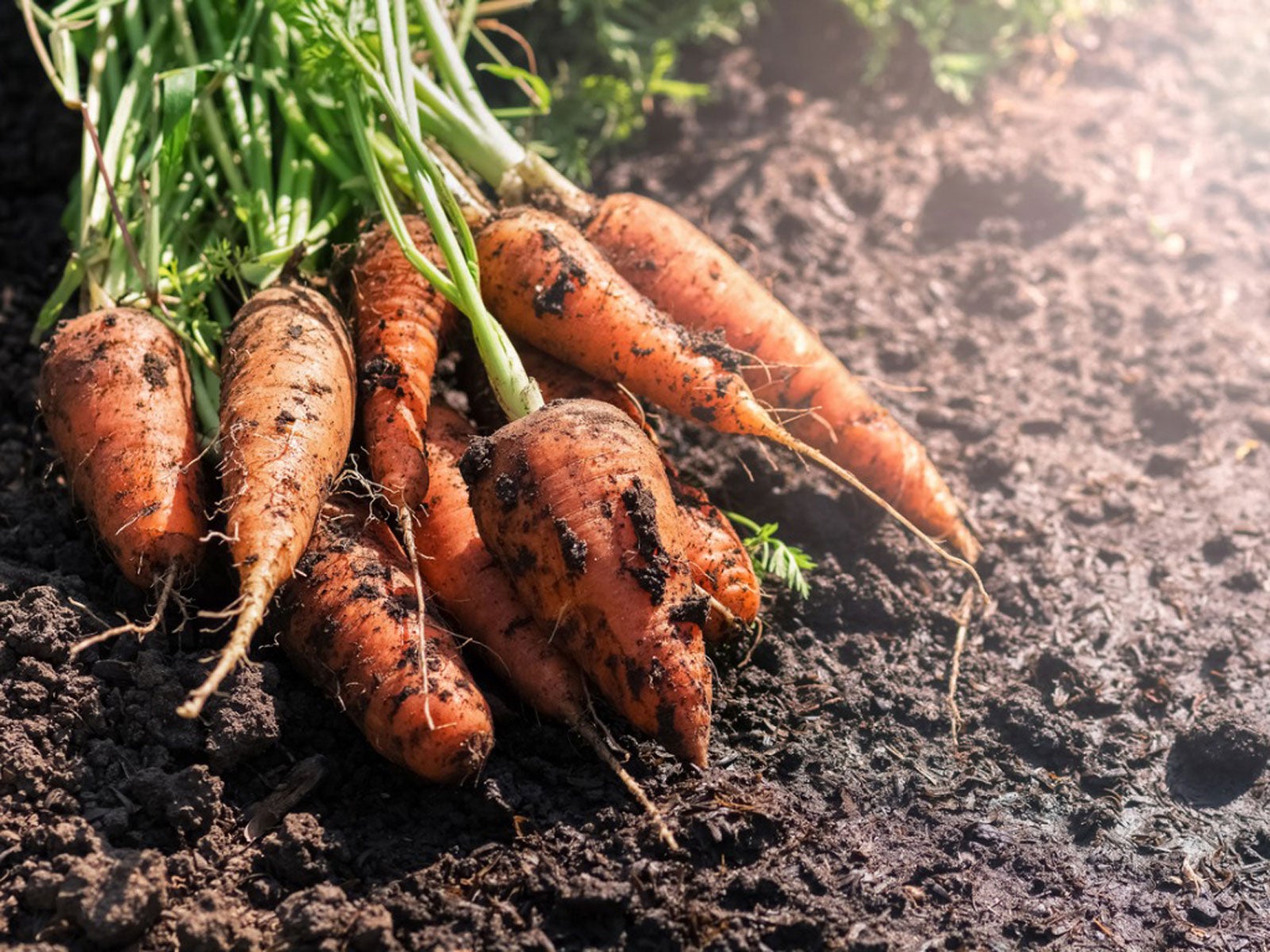
Organic gardening often simply involves prevention. Being earth-conscious by using organic seeds and pest-resistant plants, allowing space between plants for air circulation, rotating crops, weeding, and keeping sanitary garden tools all go a long way toward eliminating the need to respond to harmful insects and diseases. Of course sometimes they show up regardless.
Chemical fertilizers, pesticides and synthetic treatments in a home garden are counter-productive to an ecologically sound environment. Notwithstanding the damage to pollinators and breakdown of healthy soil, the mere production of synthetic garden chemicals is “energy intensive.”
Home Remedies
Home-made garden soaps and natural products like neem oil are simple remedies to control insects that prey on your plants and trees. Introducing beneficial insects to reduce the peskier insect populations is a great way to solve problems in the garden.
Organic gardening may require closer attention and may be a bit more work, but in the long run is worth the effort in reducing our carbon footprint. Incorporating organic practices, according to the Rodale Institute’s 40-year study, reflects that “organic farms use 45% less energy compared to conventional farms.” Some commonly used pesticides, on the other hand, release toxic greenhouse gasses into the environment.
Gardening organically isn’t simply a fad, but a global movement that will eventually become the norm if we are to survive as a species. Even large commercial farmers are beginning to appreciate the advantages of using organic methods to feed, nurture and control their crops.
Supporting Pollinators
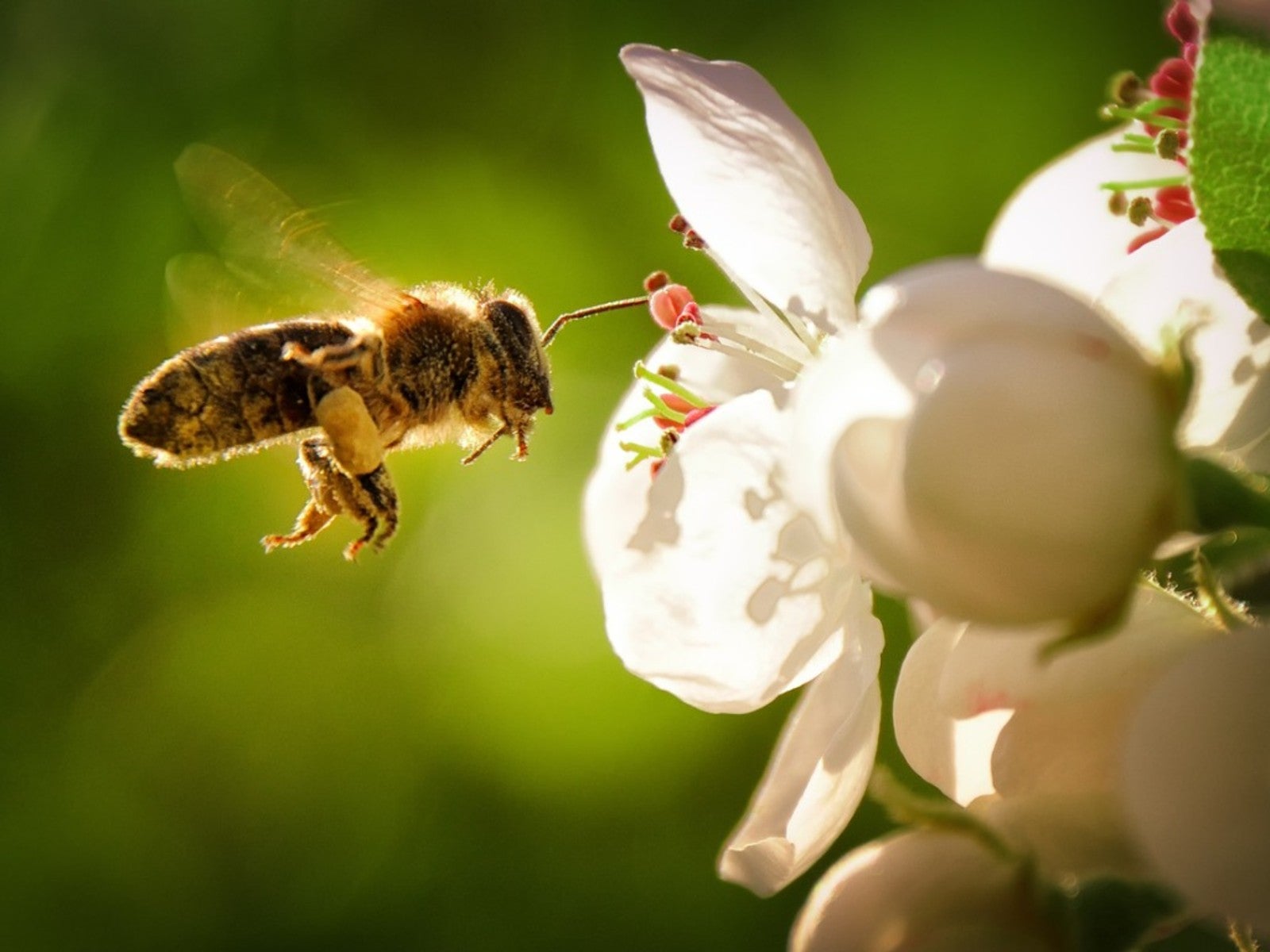
Some of us only think of pollinators as bees, but there are many other creatures that perform this vital function. Included in the pollinator family are butterflies, hummingbirds, moths, and even mammals that brush against plants as they pass by. Birds, bats and wind all carry pollen from plant to plant.
The word “important” doesn’t fully describe the urgency with which we need to support the pollinators of our world. Pollinators are involved in producing approximately one third of the food we eat.
As gardeners, we can take the declining pollinator problem into our own hands and create a lush environment for them to proliferate and serve their innate purpose.
Pollinator Gardens
In addition to growing native plants, we can attract pollinators with many kinds of flowers and vegetables that produce nectar in their blossoms. We can grow a specialized butterfly garden that attracts and feeds these graceful creatures as they travel on their migration pathways. We can arrange our gardens to attract birds and wildlife. Tubular houses for solitary-dwelling bees like mason bees and insects are inexpensive.
It’s important to avoid spraying and killing wasps and other stinging insects that are commonly unwanted in our outdoor spaces. Bats and beneficial insects will often take care of more pesky insects. Try building a bat house!
Native Plants
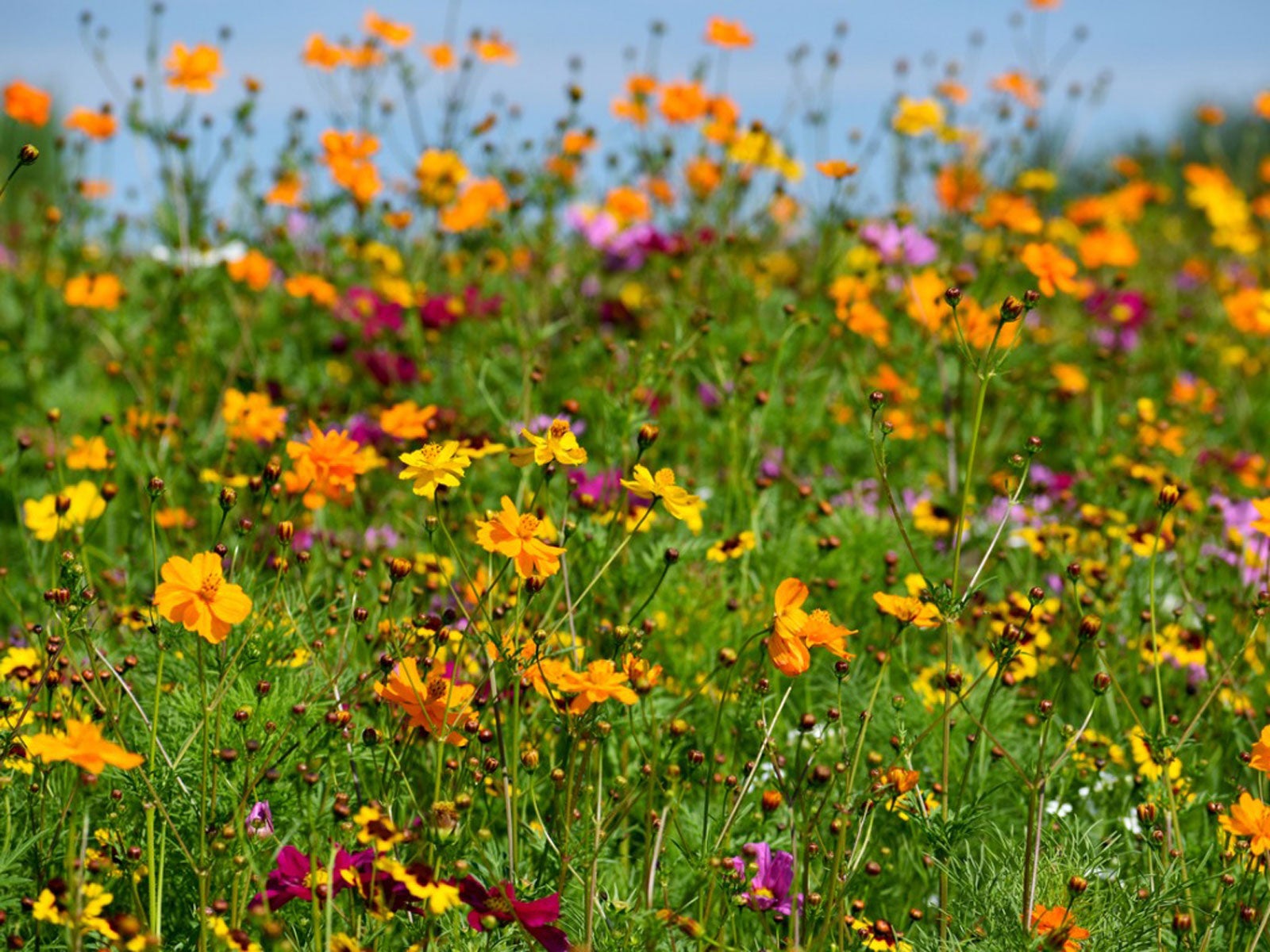
Whether you are a home or market gardener, incorporating and encouraging native plants in the garden can play a large part in keeping your garden and yard a sustainable environment.
Consider the reasons why certain plants grow naturally in your area: the specific climate, the makeup of the soil, the amount of sun and rain they receive, and the pollinators they attract are suited so perfectly to native plants that they grow and flourish without any help from humans. When we include native plantings, we are supporting the natural cycle of the plants’ pollinators, allowing local pollinators and wildlife to exist in their innate habitat, eliminating the need for synthetic chemicals.
So, be sure to incorporate the best plants for your garden by installing native plantings. Leave patches where native plants can flourish, and consider allowing your turf lawn to return to a native state.
Lawn Alternatives
It's time to forget your perfect lawn. Rewilding or “ungardening” is a concept that’s taking hold with gardeners and landscapers. Maintaining a pristine turf lawn that requires weeding, mowing and often harmful chemicals defeats the idea of sustainable gardening.
Traditional lawns require vast amounts of water to keep up their lush, green appearance, and many are maintained with sprinklers, which lose a hefty amount of their moisture to evaporation. Native plants, by their nature, are adapted to local rainfall. That usually means they have a high drought tolerance, and require much less water to keep looking beautiful.
Replacing a turf lawn with native plantings can be beautiful and fascinating, while providing a cleaner and richer natural habitat for the creatures who are naturally adapted to it. It eliminates pollution from power-equipment and no intensive weeding is required.
Experts suggest that, if possible, we should try to devote around 70% of our landscape to native plants, including trees.
Some native plants are aggressive and can create problems for your intended crops. Diversifying your native plantings can help greatly with this problem. You can check with your local extension service to learn more about any invasive natives in your region.
If you aren’t sure which plants are native to your region, the National Wildlife Federation lets you search your specific area for answers.
Sustaining and Nourishing the Soil
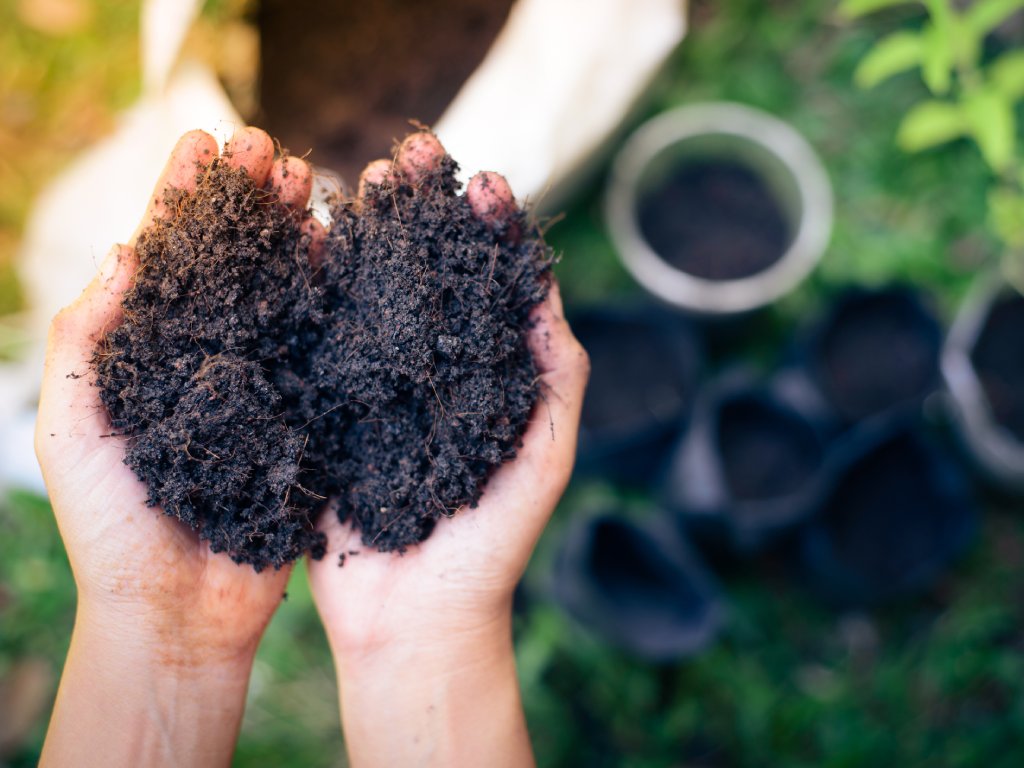
Experts define soil as “…a mixture of minerals, dead and living organisms (organic materials), air, and water. These four ingredients react with one another in amazing ways, making soil one of our planet’s most dynamic and important natural resources.”
A fundamental and critical consideration in sustainable gardening concerns the health of our soil. Large scale monoculture farming in the US has had a negative impact on soil health. This practice works in opposition to biodiversity ideals by depleting the soil and making it necessary to use chemicals. As home gardeners, we can glean lessons from this destructive practice by utilizing biodiversity in our plantings.
Healthy soils are essential to reducing greenhouse gas emissions. When we build and nurture our soil, we increase its resilience to climate change by maintaining or increasing its carbon content. When we overuse the soil, degradation of the land results in carbon being released into the atmosphere which contributes to climate change and global warming. Healthy soil is also more resistant to the destructively extreme weather events we’ve been experiencing.
Crop Rotation
The practice of rotating crops, even in the smallest garden, can help maintain soil health. When we plant the same thing over and over each year in the same spot, it deteriorates the soil and diminishes its nutrients. Repeating the same plantings in the same location over time invites unwanted insects and unhealthy soil. Our experts advise us to be sure that plants from the same family aren’t planted in the same spot for more than 3 years.
Cover Crops
Planting cover crops is another excellent way to nourish the soil. Many gardeners plant cover crops in the fall and allow them to winter over, tilling them back into the soil in spring. It’s easy to do, since many of the best cover crops are simply natives that are free and grow with vigor. Peas, beans, clover and local native grasses will deteriorate over the fall and, in addition to fixing nitrogen, will help condition clay soils. In the same way that crop rotation nourishes the soil, planting cover crops gives the soil a huge boost. Cover crops should be rotated, just like other plantings.
You may also want to consider the idea of a no-dig garden, which encourages the layering of organic materials to occur naturally. All these methods help prevent erosion and degradation.
Compost

Creating your own natural compost and mulch goes a long way toward developing a garden environment that encourages better soil, more pollinators, and healthier plants. Deciding to create compost for your garden can be an enjoyable exercise in conservation for the entire family. Whether using a commercially purchased compost container, making a compost pile in a corner of the yard, or simply burying organic kitchen waste, compost is one of the best ways to feed the soil, your plants and the Earth.
Mulch
Spreading mulch around your plants gives their roots some protection from climate extremes. Mulch your garden plants with all-natural materials can include using grass clippings, compost, dry leaves, wood chips, straw, pebbles, coconut coir, cardboard, paper and other materials that can seal in the warmth, keep out the cold and protect roots from severe heat.
It’s also easy to build layers of sheet mulch, especially when starting a new garden. Lasagna gardening follows the same idea – layering organic layers one upon the other to enrich the soil.
Organic Fertilizers
Chemical fertilizers might make your plants grow, but they are not environmentally friendly. In addition, they contribute toxins to the soil which, over time, break down its structure. Chemical fertilizers are often derived from petroleum products, which can leach into water sources.
A much better choice when you want to feed your plants would be natural substances like cottonseed meal, alfalfa meal, legume cover crops grown to be dug into the soil, compost and animal based fertilizers such as cured manure, bone meal and blood meal. These break down into the soil at a naturally slower pace, and in the long run have a much more positive impact.
Most importantly, saving kitchen scraps for the compost pile gives the garden a huge boost without costing much. A no-waste kitchen is a beautifully sustainable practice that honors the cycles of nature.
Conserving and Using Water Wisely

How we use water in the garden is more important than ever. With drought plaguing much of the country, consider how much water might be wasted as you garden.
You can help reduce water waste with rain catchment systems, including the use of rain barrels and downspouts to recycle runoff and stormwater – sustainable practices that are also practical during this time of climate change. Rather than watering your garden daily with a hose, you may want to consider a drip irrigation system that will keep roots consistently damp in times of heat and drought. More elaborate planning could involve developing a swale or a consult with a QWEL designer who can advise you on water-saving alternatives.
Upcycling and Recycling

Upcycling and recycling are important tenets of all types of sustainable gardening. What those terms mean is simply using and re-using materials that are already on hand. Basic recycling in the home is fairly well understood, but in gardening, we can also do a favor for the planet by recycling materials that can be used for garden health.
One example is using newspaper as mulch or in compost. Most newspaper ink is non-toxic, and the paper breaks down while protecting roots from cold and heat.
Recycling organic materials and food scraps from the kitchen for use in compost is one of the best examples of how to use what we already have to support the earth. Upcycle your worn-out materials such as lumber to repurpose as trellises, raised beds and supports for climbing plants.
In some cases, you may be able to use certain forms of gray water from your household. Not all household water is suitable or safe for all gardening, but it’s often safe for ornamental plantings. Save your fresh water for vegetables and edibles.
Understanding Permaculture and Regenerative Gardening

Permaculture
Permaculture gardening calls on us to recognize the patterns of nature and how they work together. If you live in a natural setting you may want to forego the work of a manicured garden and consider allowing a food forest to develop. A food forest, for example, is often simply a wild or woodland space inter-planted with vegetables, fruit, and herbs that grow naturally and symbiotically, co-existing with native wildlife.
Permaculture is the essence of biodiversity in gardening and, as its name implies, it imparts a resilience in the landscape. As a home gardener you may already be practicing permaculture methods. Permaculture practices include recycling and reusing materials, allowing for wildlife in the garden plan, growing an edible landscape while cultivating native plants, growing medicinal crops, and using natural materials to create a peaceful and rejuvenating ambience for the benefit of the planet and our shared population.
You may also want to incorporate permaculture by building a keyhole garden, which uses a raised area in your garden’s center for water and compost collection, and allows the resulting nutrients to seep out into the surrounding garden soil for lasting nourishment.
Regenerative Gardening
Regenerative gardening methods are simply ways to feed and regenerate the soil rather than deplete it. For a garden, this would include regular crop rotation, no till-gardening and perhaps planting with a “lasagna” method. The idea is to disturb the soil as little as possible, allowing it to maintain its natural health by layering compost and organic components.
At Gardening Know How we encourage all gardeners to experiment with different sustainable gardening methods. Becoming more aware of our human impact on the planet and making even a small change in our gardening habits helps to make a significant difference. As gardeners, we’re all earth heroes. A continued effort to improve the conditions on the Earth is our gift to future generations.

Caroline Bloomfield is Manager of Marketing Communications at Gardening Know How since 2019. A northwest native, she has resided and gardened in multiple zones in the U.S. and is currently at home in Bandon, Oregon. Writing and editing for various publications since 1998, her BA in American Studies from Southern Maine University includes an emphasis in English. She was raised in California by avid gardeners and continues to enjoy the natural world with an appreciation for the concepts of sustainability and organic care for the planet.